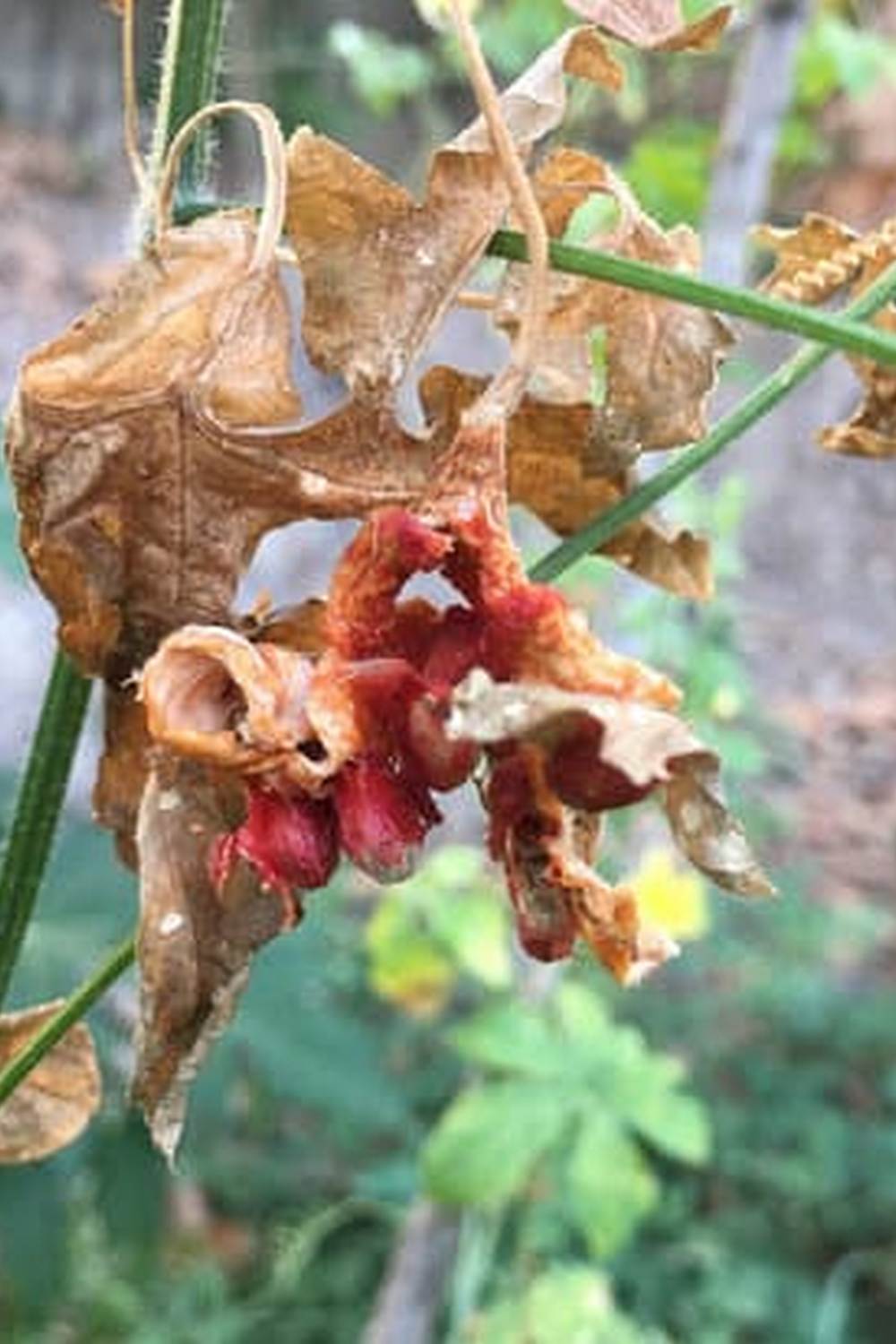Greenhouse vegetable gardening in winter offers the perfect solution to continue enjoying fresh produce even when outdoor conditions are harsh. The controlled environment of a greenhouse allows for extended growing seasons and protection from the cold, making it an ideal option for year-round gardening enthusiasts. By harnessing the power of a greenhouse, you can cultivate a variety of vegetables during the winter months, ensuring a bountiful harvest regardless of the weather outside.
One of the key advantages of greenhouse vegetable gardening in winter is the ability to choose from a wide range of cold-hardy vegetables that thrive in cooler temperatures. From leafy greens like lettuce and kale to root vegetables such as carrots and radishes, there are plenty of options to suit your preferences and climate conditions. By selecting the right vegetables for your winter greenhouse garden, you can ensure success and enjoy a diverse harvest throughout the season.
To make the most of your winter greenhouse vegetable gardening venture, it is essential to set up your greenhouse properly for optimum growing conditions. This includes ensuring adequate ventilation, controlling temperature and humidity levels, and maximizing natural light exposure. By creating a conducive environment within your greenhouse, you can provide your plants with the ideal habitat to flourish and produce an abundant yield during the colder months.
Choosing the Right Vegetables for Winter Greenhouse Gardening
When it comes to planning your greenhouse vegetable garden for the winter months, selecting the right vegetables is crucial to ensure a successful harvest. Some vegetables are better suited for growing in the colder temperatures and limited sunlight of winter.
Winter Vegetables
Certain vegetables thrive in cooler conditions and can withstand lower temperatures. Leafy greens like kale, spinach, lettuce, and Swiss chard are excellent choices for winter greenhouse gardening. Root vegetables such as carrots, beets, turnips, and radishes also do well in a winter greenhouse environment. These vegetables not only tolerate colder temperatures but also benefit from the protection and warmth provided by the greenhouse.
Quick-Growing Varieties
For those looking to have a faster harvest during the winter months, consider planting quick-growing varieties of vegetables such as radishes, arugula, and microgreens. These crops mature relatively quickly and can be harvested within a few weeks of planting, providing you with fresh produce sooner.
Setting Up Your Greenhouse for Optimum Winter Gardening Conditions
Another key factor in setting up your greenhouse for winter gardening is ventilation. While it’s essential to keep the cold out, it’s equally important to allow fresh air to circulate within the greenhouse. Ventilation systems such as roof vents, side vents, or circulation fans can help regulate temperature and humidity levels, preventing issues like mold or mildew from developing in your greenhouse during the winter season.
In addition to insulation and ventilation, optimizing light exposure is crucial for the growth of winter vegetables in your greenhouse. Consider positioning your greenhouse in a location that receives maximum sunlight exposure during the shorter days of winter.
You can also supplement natural light with grow lights to ensure that your plants receive adequate light for photosynthesis. By carefully setting up your greenhouse for optimum winter gardening conditions, you’ll create a thriving environment for growing vegetables even when outdoor conditions are harsh.
| Insulation | Proper Insulation Helps Retain Heat and Create a Stable Environment. |
|---|---|
| Ventilation | Effective ventilation systems regulate temperature and humidity levels. |
| Light Exposure | Positioning for maximum sunlight exposure and supplementing with grow lights. |
Maintaining Temperature and Humidity Levels in Your Greenhouse During Winter
With the winter season bringing colder temperatures and less sunlight, maintaining ideal temperature and humidity levels in your greenhouse becomes crucial for successful vegetable gardening during this time. The controlled environment of a greenhouse offers the advantage of being able to regulate these factors, ensuring that your plants thrive even in the coldest months.
Insulating Your Greenhouse
One essential step in maintaining temperature levels in your greenhouse during winter is to properly insulate it. This can involve adding insulation material to walls or covering openings with blankets during especially cold nights. Ensuring that there are no drafts or leaks will help retain heat within the greenhouse, creating a more stable environment for your plants.
Monitoring Temperature and Humidity
Regularly monitoring the temperature and humidity levels inside your greenhouse is key to making adjustments as needed. Utilizing a thermometer and hygrometer can help you keep track of these factors, allowing you to intervene if conditions stray from the optimal range for vegetable growth. Some gardeners also opt for automated systems that control heating and ventilation based on preset parameters.
Supplemental Heating and Humidifying
In particularly harsh winter climates, supplemental heating may be necessary to maintain adequate warmth for your vegetable plants. Electric heaters or heat mats can provide extra warmth during cold spells.
Additionally, humidifying devices such as misting systems or trays of water can help elevate humidity levels within the greenhouse, preventing plants from drying out in dry winter air. By carefully managing temperature and humidity levels in your greenhouse throughout the winter season, you can ensure that your vegetables continue to grow healthily and yield bountiful harvests despite the challenging weather conditions outside.
Watering and Feeding Methods for Winter Greenhouse Vegetable Gardening
In greenhouse vegetable gardening, winter poses unique challenges when it comes to watering and feeding your crops. With lower temperatures and reduced sunlight, plants may require different care compared to the warmer months. It is essential to adjust your watering schedule during winter to accommodate for the decrease in plant water uptake due to the cooler conditions. Overwatering can lead to root rot, while underwatering can result in stunted growth and nutrient deficiencies.
One effective method for watering winter greenhouse vegetables is to monitor soil moisture regularly. Checking the moisture level of the soil with a finger or using a moisture meter can help you determine when it’s time to water. Water your plants deeply but less frequently to prevent waterlogging and promote healthy root development. Remember that plants may not need as much water during winter as they do in summer, so be mindful of their specific needs.
When it comes to feeding your winter greenhouse vegetables, consider using a balanced fertilizer to provide essential nutrients for plant growth. Slow-release fertilizers can be beneficial during the colder months as they gradually release nutrients over time, ensuring a steady supply for your crops.
Additionally, organic composts can improve soil structure and fertility, promoting healthier plant growth and increasing resistance to pests and diseases common during winter. Carefully monitoring your plants’ nutrient requirements throughout the season will help you maintain optimal health and productivity in your winter greenhouse garden.
| Benefit | Method |
|---|---|
| Preventing root rot | Monitor soil moisture regularly |
| Promoting healthy root development | Water deeply but less frequently |
| Providing essential nutrients | Use a balanced fertilizer or organic composts |
Pest and Disease Control Strategies Specific to Winter Greenhouse Gardening
When it comes to greenhouse vegetable gardening in winter, there are specific challenges that arise in terms of pest and disease control. The enclosed environment of a greenhouse can sometimes create the perfect conditions for pests and diseases to thrive, especially during the colder months. However, with the right strategies in place, you can keep your plants healthy and thriving throughout the winter season.
Listed below are some effective pest and disease control strategies specifically tailored for winter greenhouse gardening:
- Regularly inspect your plants: Make it a habit to routinely check your plants for any signs of pest infestations or diseases. Early detection is key to preventing any issues from spreading.
- Implement good sanitation practices: Keep your greenhouse clean and free of debris that could harbor pests or disease-causing pathogens. Regularly remove fallen leaves, clear out weeds, and disinfect tools to prevent the spread of infections.
- Encourage beneficial insects: Introduce predatory insects like ladybugs or lacewings that can help control common greenhouse pests such as aphids or whiteflies. These natural predators can be an effective biological control method.
By following these pest and disease control strategies, you can ensure that your winter greenhouse vegetable garden remains healthy and productive throughout the colder months. Taking proactive measures to prevent issues before they arise will help you enjoy a successful harvest of fresh produce even in the midst of winter.
Tips for Maximizing Natural Light in Your Greenhouse During the Winter Months
During the winter months, natural light becomes a precious commodity for greenhouse vegetable gardening. Ensuring that your plants receive adequate sunlight is crucial for their growth and development, especially when daylight hours are limited. Here are some tips to help you make the most of natural light in your greenhouse during the winter:
- Positioning: Place your greenhouse strategically to maximize the exposure to sunlight. Orienting it towards the south will ensure that it receives the most sunlight throughout the day.
- Cleanliness: Keep your greenhouse windows and panels clean to allow maximum light penetration. Dirt and debris can block sunlight, reducing its effectiveness in reaching your plants.
- Pruning: Regularly prune any overhanging branches or foliage that may obstruct sunlight from entering your greenhouse. This will help ensure that all parts of your plants receive adequate light for photosynthesis.
In addition to these tips, you can also consider incorporating artificial lighting sources such as grow lights or LED lamps to supplement natural light during the darker winter days. While nothing beats the sun’s natural rays, artificial lighting can provide an extra boost to support plant growth in your greenhouse. With a combination of strategic positioning, cleanliness, pruning, and supplemental lighting, you can create optimal conditions for your winter greenhouse vegetable gardening.
Lastly, consider using reflective materials inside your greenhouse to bounce and amplify natural light towards your plants. White paint or reflective films on walls or surfaces can help increase light intensity within the greenhouse, ensuring that even on cloudy days, your vegetables still receive a sufficient amount of sunlight. By implementing these strategies, you can make the most of natural light available during the winter months and keep your greenhouse vegetables thriving throughout the season.
Harvesting and Enjoying the Fruits of Your Winter Greenhouse Vegetable Gardening Labor
As the winter months come to an end and you have successfully tended to your greenhouse vegetable garden, it is time to harvest and enjoy the fruits of your labor. One of the most rewarding aspects of greenhouse vegetable gardening in winter is being able to enjoy fresh produce even when the weather outside is cold and dreary.
Whether you have been growing leafy greens, root vegetables, or herbs, there is nothing quite like picking your own homegrown veggies for a meal.
Harvesting during the winter can be particularly satisfying as you get to see the result of your hard work despite the challenging conditions. Make sure to harvest your vegetables at the right time to ensure optimal flavor and nutrition. Leafy greens can be harvested continuously by cutting outer leaves, while root vegetables like carrots and beets should be harvested when they have reached a good size but before they become woody.
Once you have harvested your winter greenhouse veggies, it’s time to enjoy them in all their freshness. From salads with crisp lettuce leaves to hearty stews packed with root vegetables, there are endless culinary possibilities with homegrown produce.
Embrace the flavors of your harvest by incorporating them into your favorite dishes or trying out new recipes that highlight the taste and quality of your greenhouse-grown vegetables. The satisfaction of eating food that you have grown yourself can truly elevate the dining experience and make all the effort put into winter greenhouse vegetable gardening worthwhile.
Conclusion
As the winter season brings colder temperatures and less daylight, greenhouse vegetable gardening becomes a rewarding and sustainable way to continue growing fresh produce year-round. By utilizing a greenhouse, gardeners can create an environment that protects their plants from the harsh winter conditions while still allowing them to thrive. The benefits of greenhouse vegetable gardening in winter are plentiful, from having access to homegrown produce during the coldest months to enjoying a peaceful and fulfilling hobby indoors.
Choosing the right vegetables for winter greenhouse gardening is essential in ensuring a successful harvest. Cold-hardy crops such as kale, spinach, carrots, and radishes are excellent choices for growing in a greenhouse during the winter months. These vegetables can withstand lower temperatures and have shorter growing seasons, making them ideal for cultivation in a controlled environment. With proper care and attention, gardeners can enjoy a bountiful harvest of fresh greens and root vegetables throughout the winter.
In conclusion, embracing year-round vegetable gardening in your greenhouse opens up a world of possibilities for homegrown produce regardless of the season. By selecting suitable vegetables, setting up optimal growing conditions, maintaining appropriate temperature levels, implementing pest control measures, maximizing natural light exposure, and staying on top of watering and feeding schedules, you can enjoy a flourishing garden even in the depths of winter.
The joy of harvesting your own fresh vegetables throughout the year is truly a fulfilling experience that showcases the potential of greenhouse vegetable gardening in every season.
Frequently Asked Questions
What Vegetables Can You Grow in a Greenhouse Over the Winter?
Various vegetables can thrive in a greenhouse over the winter months. Some common options include leafy greens like spinach and lettuce, root vegetables like carrots and beets, as well as cold-tolerant herbs like parsley and cilantro.
Can You Grow Plants in a Greenhouse in the Winter?
Yes, it is possible to successfully grow plants in a greenhouse during the winter. With proper insulation, heating, and lighting, many plants can continue to grow even when temperatures drop outside. It provides a controlled environment that protects plants from harsh weather conditions.
Can You Grow All Vegetables Year Round in a Greenhouse?
Not all vegetables can be grown year-round in a greenhouse due to specific requirements such as temperature, light, and space. While many vegetables are suitable for greenhouse cultivation during the winter, some may still struggle without natural sunlight or proper growing conditions.

If you’re looking to get into vegetable gardening, or are just looking for some tips on how to make your current garden better, then you’ve come to the right place! My name is Ethel and I have been gardening for years. In this blog, I’m going to share with you some of my best tips on how to create a successful vegetable garden.





